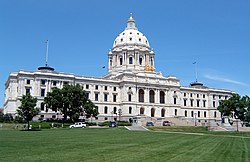Sessions
The legislature met in a regular session from January 3, 2001 to May 21, 2001. A special session began on June 11, 2001 to consider taxes, the budget, and other bills not passed during the regular session. [1]
A continuation of the regular session was held between January 29, 2002 and May 20, 2002. An additional special session was convened on September 19, 2002 to provide flood relief for Roseau and consider sales taxes and charitable deductions. [1]
This page is based on this
Wikipedia article Text is available under the
CC BY-SA 4.0 license; additional terms may apply.
Images, videos and audio are available under their respective licenses.
